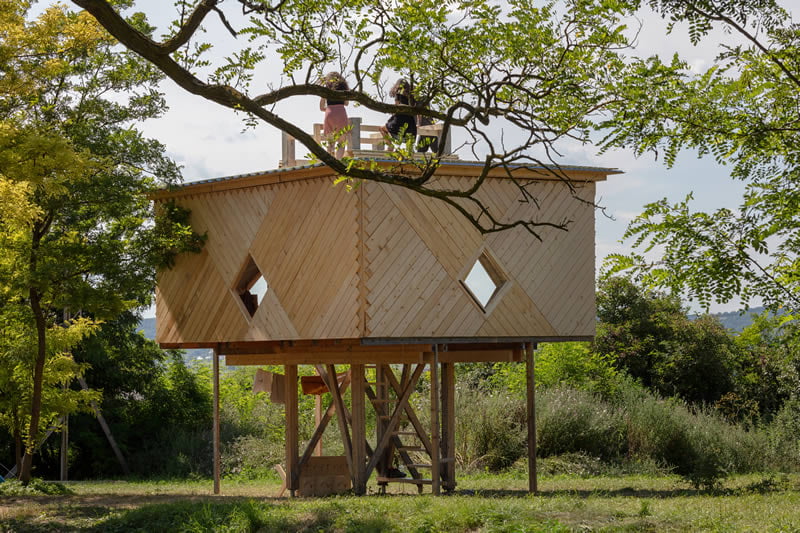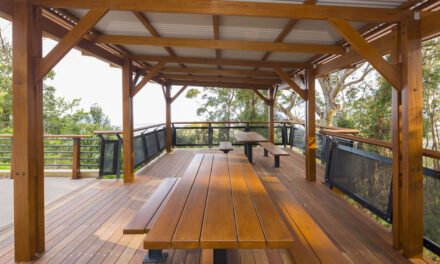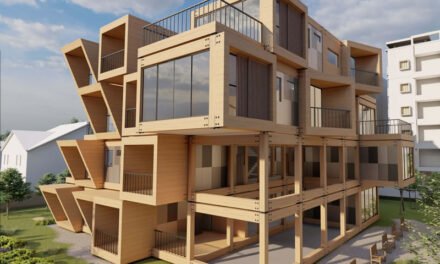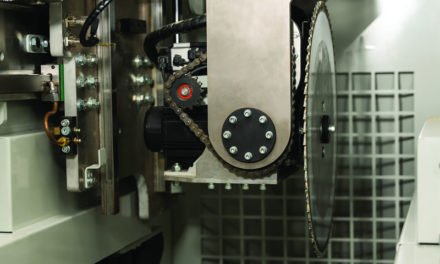The beauty and potential of timber is celebrated by Budapest-based Hello Wood, a creative design and architecture studio that challenges and delights.
For many years, Budapest has been famous as a city of fine art and architecture. It’s a place where creativity is a part of the DNA – for both the city and its inhabitants.
Budapest-based Hello Wood fits firmly into that tradition. The creative design and architecture studio is famous for work that displays a mixture of intelligence, environmental responsibility and light-heartedness. Their projects are dominated by timber and include giant Christmas Trees that have been used for everything from advertising to charity promotions; summer pop-up parks in Városháza Park, where people can relax and play on the whimsical structures; and ice-rinks and eateries that mix practicality with fairy tales.
But they also focus on education. The ninth Hello Wood International Summer University and Festival was recently held in the lush Hungarian countryside. There, 90 students plus architects gathered to work on a collaborative project called Cabin Fever.
Working in conjunction with the Hello Wood team and selected mentors, students move through the design process from concept to construction. Positions at the university are keenly sought after. Orsi Janota, head of education at Hello Wood, says, “Students are selected through an application process: we ask for a portfolio and motivation letter. We value enthusiasm and an original look on the year’s topic as much as relevant experience and a nice portfolio.”
This year’s intake was mentored by leading international architects including Hungarian AU workshop and Marton Low, Czech H3T architekti, Spanish architect Josep Garriga and OfficeShophouse, Italian ZarCola, Argentinian iR arquitectura and Swiss frundgallina.
The rural campus was once nothing more than fields and forest. But after nine summers and workers from 30 countries and 65 universities, it increasingly resembles a working village.
A place to stay
Cabin Fever took its cues from the Tiny House Movement, which began in America but has since spread internationally. Small, often portable, homes are designed for low-cost, simple living. Ideally they should be made of materials that have minimal environmental impact and encourage a lifestyle that is not wasteful.
The students and design professionals spent nine days creating a series of cabins using predominantly timber-based materials. The project was entirely hands-on, a far cry from the heavily theoretical coursework of most architecture degrees.
As Janota describes it, the Summer University experience can be transformative in seeing students shift from academia to a practical career. “They experience what its like to finish something,” she says, “to feel responsible. To see what its like to work with material and work in nature. They become stronger in the sense that they can have better skills at thinking through an architectural plan from start to end, they may have better chances at creating architectural concepts that are in the right relation to their material use.”
Hello Wood runs the event with the help of sponsors providing support and materials, including LafargeHolcim Group, which trialled its new mineral thermal insulation material as part of the project, and Berger Houses, which donated a set of prefabricated wall panels for a cabin. The major sponsors are JAF Holz, one of the major European wood product companies, and the Hungarian Tourism Agency.
The cabins
Each Cabin Fever project had a set of constraints: they needed to be quick to build, to use products that were available, and to be capable of offering shelter, whether as a summer retreat or year-round.
Within these criteria, imaginations were free to roam, and the responses varied widely. The cabin-on-stilts I am a monument by Josep Garriga + OfficeShophouse was built around an abandoned project on the site. The stilt house combines a shade, airy understorey with a protected refuge on the first floor and a private upper floor. It embodies the architectural principal that a building is never finished, over time it is transformed to the needs of those using it.
Team leaders were Josep Garriga, Patxi Martin and Natalia Vera Vigaray, working with Aloutsanidis Vasilis, Lance Macadangdang, Rogier Tamminga, Hena Wang, Darya Moatazed-Keivani, Berta Ballestin, Lara Gonzalez, Pyeori JUng, Charlotte Cocking, Zhao Zhou, Fábián Villányi, Ruairidh Murdock and Gabrielle Sanchez.
Grand Cabin Club by Hello Wood is the clubhouse of the set. The A-frame is reminiscent of mountain lodges, with an open floorplan and the bedrooms and bathrooms in additional ‘boxes’ allowing maximal floor space. The prefabricated panels sped up construction and the glazing offers magnificent views.
Team leaders were Dávid Ráday, András Huszár, Nóra Fekete and Ádám Bajtai, working with Martin Varvas, Ogulcan Aksoy, Simona Rusnačková, Lucia Pum, Milan Voorhorst, Maria Gracia Latorre, Matteo Rossetti, Filip Cerha, Miriam Rieke, Nolwen Major Francès and Csaba Rittling.
Ziggurat Delivery by ZarCola was built to emphasise seasonal changes. Sophisticated insulation and a central chimney keep the residents snug on cold days, but deliberately small public spaces encourage inhabitants to go outside in good weather.
Team leaders were Edoardo Giancola and Federico Zarattini working with Martin Kral, Amy Hickery, Jagoda Borkowska, Barıs Doga Çam, Kartikai Majithia, Šárka Malošíková, Nikolaj Srdić Kranjc, Asli Candan, Linda Sze-To, Karoline Marken Smenes, Eda Ünal, Didem Günes Yilmaz and Zoltán Sóvári.
Project vertical cabin by H3T architekti is the most portable of the designs, with wheels on one side allowing it to be carted anywhere. However, the weight of the roof means it needs to be craned into place once the main body of the cabin has been lifted by ropes. The whole cabin was created from scraps left over from previous projects.
Team leaders were Karel Harazim, Tomáš Madro and Marek Barjak, working with Katie Hay, Michaela Vatral’ová, Lauren Fashokun, Danny Martin, Chloe Jakharia, Carl Harris, Karolina Lazar, Josef Vild, Maria Walker, Lesley Cheung, Moldovan Bianca-Claudia and Sabrah Islam.
Project Treehouse by frundgallina has tall, angled sides leading up from an open public area at its base to private upper floors that can be illuminated for a forest lighthouse.
Team leaders were Pascal Deschenaux, Aziz Temel, Francesco Borghini, with Alice Kim, Maria Victoria Gracia, Miranda Rigby, Kam Lai Man, Nguyen Hoang Minh, Jack Bowen, Igor Nesterov, Katarina Martonakova, Hugh Gibbs, Evgeny Makarenko, Nanu Youttananukorn, Anna Varga-Kardos, Karolina Krzyzanowska, Laia Bramona Collet and Fruzsina Karig.
Cabin modules by iR arquitectura can be split into its component rooms and reassembled as needed. A passive house, running on solar, it uses basic green energy.
Team leaders were Fermin Indavere and Tommaso Polli, working with Leo Hollmann, Magdi Khalil, Bartek Grzesznik, Motong Yang, Katie van Dorssen, Henry Brook, Spanelli Efterpi Konstantina, Adrienn Sasvári, Mirna Grubisic, Christian Swallow, Polina Bouli, Yuliia Zalomaikina, Emanuel Sanchez Pinela and Máté Nagy
The future
For the Hello Wood team – which also includes Péter Pozsár, curator of Cabin Fever and co-founder of Hello Wood, Fruzsi Karig, co-curator of Cabin Fever, András Huszár and Dávid Ráday, co-founders of Hello Wood, Gergely Lukács Szöke, Niki Lakatos, Anita Farkas, Andi Cselovszki, Péter Pé Szabó, Máté Nagy and Niki Papp – the Summer University and other Festival projects such as the pop-up park are designed to educate more than students.
“We would like to think that our wood projects from the last nine years, which have had great publicity and have been located at public spaces and festivals, have had an impact on people’s perception of the beauties and possibilities of using wood,” says Janota.
The design team’s timber structures have encouraged people to linger where they are erected and to enjoy the space, finding shared joy in the beauty of the designs and the pleasure of using them.
It’s been a similar experience for the students, Janota says, “Bringing people together to find a solution for a challenge as a team, to work with their hands, creating situations for democratic decision making, can create a great sense of community.”
Next year will mark the 10th anniversary of Hello Wood International Summer University and Festival. The 2019 theme is Celebrations and Holidays and will honour previous years’ work as well as developing its own layer of history at the site.
The group’s productive relationship with both timber industry professionals and government bodies is an inspirational idea that’s ripe for adoption around the world. But until that happens, Hello Wood welcomes applications by international students and is available for design collaborations worldwide.
For more details, visit www.hellowood.eu
Image: I am a monument, photo by Tamas Bujnovszky












